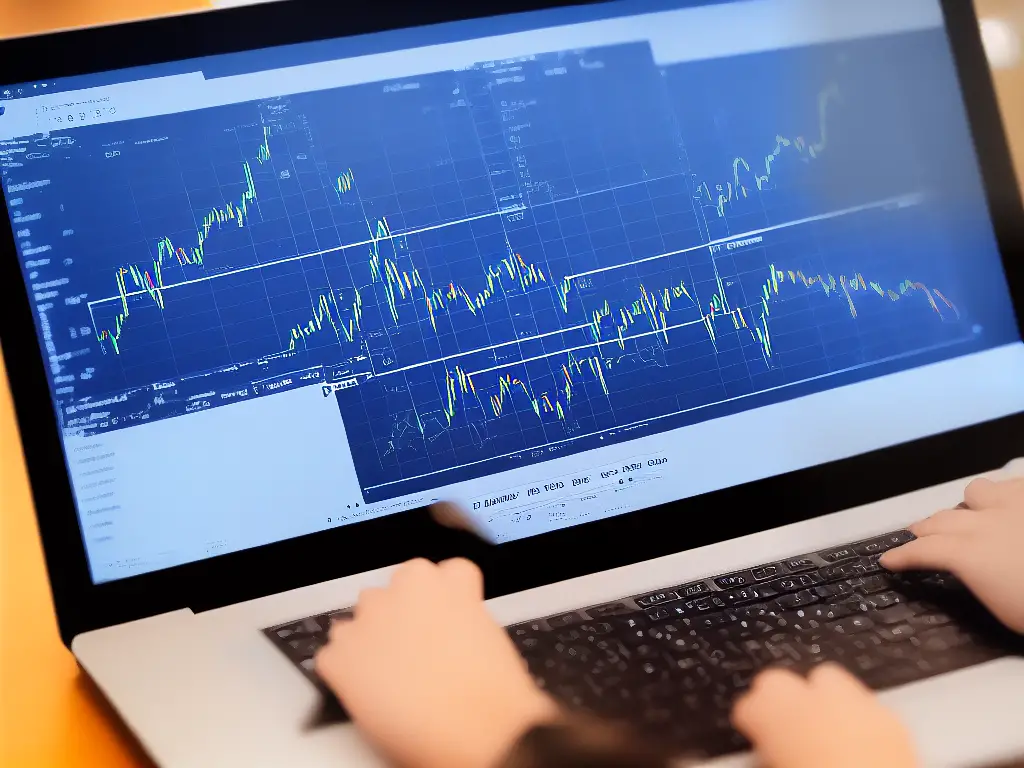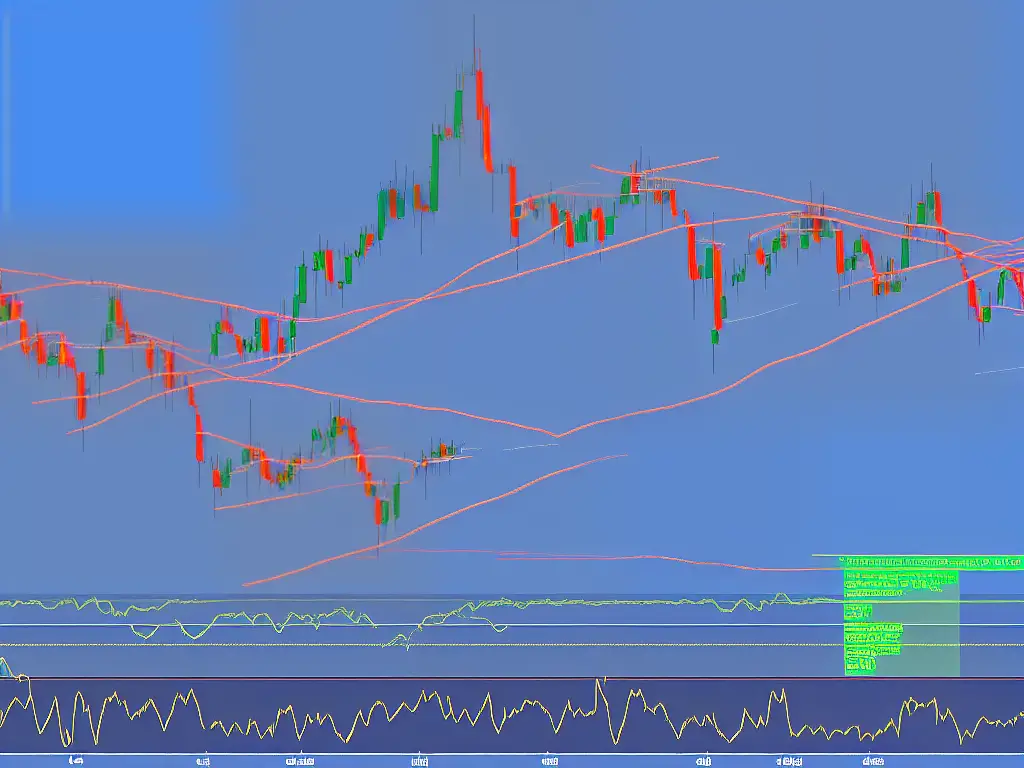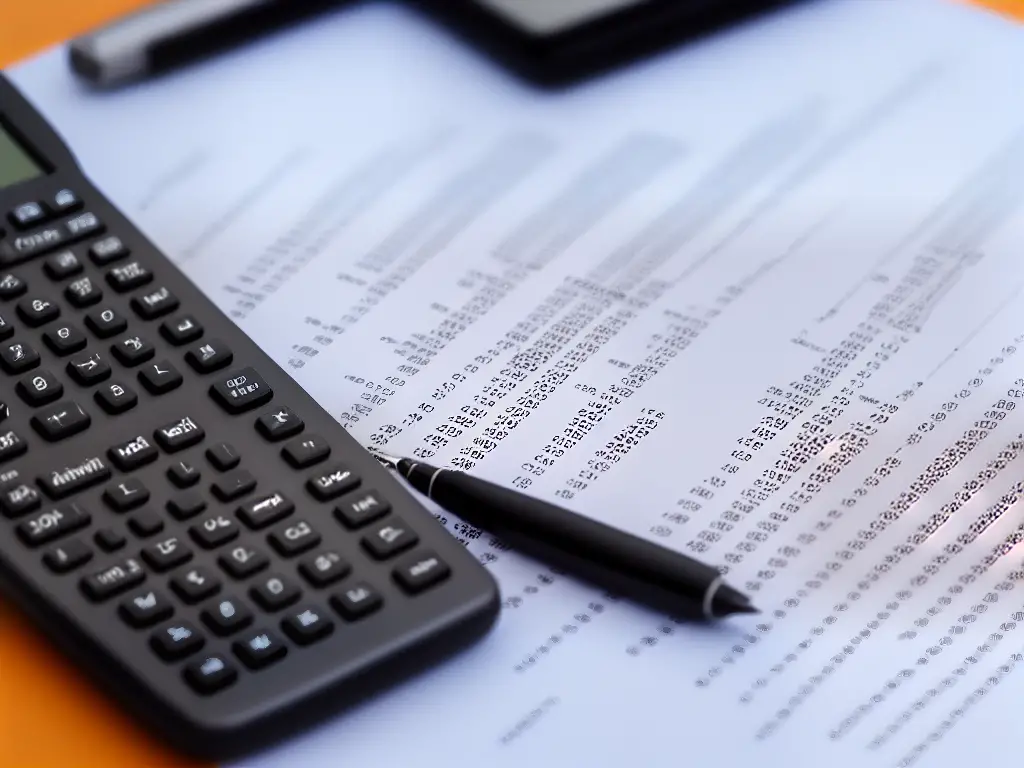Welcome to the world of day trading, where you can potentially earn significant profits by leveraging the fluctuations in the stock market. But, keep in mind that day trading is not for everyone: it comes with its own set of challenges, risks, and rewards. In this comprehensive guide, we will walk you through the essential aspects of day trading, from understanding the terminology to setting up a trading account, exploring various strategies, and much more. So, buckle up and let’s start your journey towards becoming a successful day trader!
Introduction to Day Trading
Day trading involves buying and selling financial instruments such as stocks, currencies, or commodities within the same trading day. The goal is to make small but frequent profits that add up to a significant return by the end of the day. Day trading is a fast-paced, high-risk investment strategy that requires knowledge, skill, and a trading platform.
Understanding Day Trading
To become a successful day trader, you must have a thorough understanding of financial markets and various trading strategies. You will also need to be comfortable working with numbers, charts, and making quick decisions to establish and close trading positions throughout the day.
Potential Risks and Rewards of Day Trading
Day trading offers the prospect of significant returns within a short period but is considered high-risk. Rapidly fluctuating prices can lead to losses without effective risk management techniques, such as stop-loss orders and trading a predetermined portion of your investment capital.
The General Concept of Day Trading and Trading Strategies
Day traders follow basic principles such as technical and fundamental analysis, risk management, and a chosen trading strategy. Strategies include scalping, momentum trading, and range trading.
How to Get Started with Day Trading
Interested in day trading? Research, learn, and choose a reputable broker with a user-friendly trading platform and tools/resources to assist in your trading endeavors. Practice with a demo account or paper trade before committing real money, keep detailed performance records, and regularly review and adapt your trading strategy to changing market conditions.

Trading Terminology
Day trading refers to the practice of buying and selling financial instruments within a single trading day. This means that positions are typically opened and closed within a relatively short period, often minutes or hours, rather than being held for longer periods.
A stock represents a share of ownership in a company. When you buy a stock, you’re essentially buying a small portion of that company.
Taking a long position means buying a stock with the expectation that its price will rise. This is the most common type of trade in day trading.
A short position is an opposite of long position. It means selling a stock that you don’t actually own, with the expectation that its price will fall. You can then buy the stock back at a lower price, making a profit.
Leverage allows you to borrow money from a broker to increase your purchasing power. This means you can invest more money than you actually have in your account, potentially amplifying your gains (or losses).
A stop loss order is a specific type of order placed with your broker to sell a security when it reaches a certain price. It is designed to limit the loss on a long or short position.
A limit order is an order placed with your broker to buy or sell a security at a specific price or better. Unlike a market order, a limit order does not guarantee an execution, but it does guarantee the price.
A bull market is a financial market characterized by rising asset prices, typically stocks or other types of investments. This term is used to describe a period of optimism and investor confidence.
In contrast to a bull market, a bear market is characterized by falling asset prices and a pessimistic outlook from investors.
Technical analysis is a method of forecasting the future price movements of a security by analyzing its historical price patterns and various chart indicators.
Fundamental analysis is a method of evaluating a security by analyzing its financial statements, management team, and overall industry trends to determine its intrinsic value.
The bid price is the highest price that a buyer is willing to pay for a security.
The ask price is the lowest price that a seller is willing to accept for a security.
The spread is the difference between the bid and ask prices. It represents the profit margin that market makers or brokers earn from each trade.
Support and resistance levels are key price points where the forces of supply (selling) and demand (buying) meet. Support is a price level at which a stock tends to stop falling, while resistance is a price level at which a stock tends to stop rising.
Volatility is a measure of how much the price of a security fluctuates over a given period. High volatility generally indicates a higher degree of risk, but it also provides more opportunities for day traders to profit from price movements.
A margin account allows you to borrow money from your broker to buy securities. This provides you with leverage, increasing your purchasing power and potential returns (as well as risks).
Liquidity refers to the ease with which a security can be bought or sold in the market without affecting its price. Highly liquid securities, such as large-cap stocks, are ideal for day trading.
Market capitalization (or market cap) is the total market value of a company’s outstanding shares of stock. It is calculated by multiplying a company’s total shares by its current stock price.
A moving average is a technical indicator that calculates the average price of a security over a specified period. It helps to smooth out price fluctuations and identify trends.
By understanding and familiarizing yourself with these common day trading terms, you’ll be well on your way to building a solid foundation for your day trading journey. Always remember that day trading involves a significant amount of risk, and it’s important to have a comprehensive strategy in place to manage that risk and increase the likelihood of success.

Setting Up a Trading Account
The first step in setting up a trading account is to research various trading platforms. Some popular platforms include TD Ameritrade, E*TRADE, Interactive Brokers, and Robinhood. Look for a platform that has the features and tools you need, such as real-time quotes, charts, and news sources. Additionally, consider the platform’s fees, including commission, account minimums, and other costs.
A broker is a company that facilitates the buying and selling of assets on your behalf. Some brokers offer their own trading platforms, while others may operate on third-party platforms. When choosing a broker, consider factors such as their reputation, fees, and available assets to trade.
There are various types of trading accounts available, such as individual accounts, joint accounts, retirement accounts (e.g., IRA, 401k), and margin accounts. Each account type has its own specifications and requirements, so choose the one that suits your needs and trading goals. For beginners, an individual cash account is usually the best option.
To open a trading account, you’ll need to provide some personal information, including your name, address, date of birth, social security number, and a valid form of identification (e.g., driver’s license, passport). You’ll also need to confirm your employment status and provide your employer’s information (if applicable). This information is required by regulators to verify your identity and prevent fraud.
Once you’ve collected the necessary information, proceed to your chosen broker’s website and look for the account opening process. You may need to create an online profile or account with the broker before proceeding. Follow the on-screen instructions to input your personal information, choose your account type, and set up any required security features or preferences.
Most trading accounts require an initial deposit to begin trading. Some brokers have a minimum funding requirement, so check this before depositing funds. You can usually fund your account via bank transfer, credit card, debit card, or check. Keep in mind that some funding methods may take longer to process than others.
Before you start trading, you may need to set up certain account preferences, such as default order types, trading permissions, and notification settings. These preferences will help you execute trades more efficiently and stay informed about your account activity.
Once your account is set up and funded, acquaint yourself with the trading platform’s features and tools. This may include learning how to place orders, create watchlists, and use charting tools. Also, familiarize yourself with the platform’s help resources, such as tutorials, FAQs, and customer support options.
With your account set up and a solid understanding of the trading platform, you’re ready to begin day trading. Start small and consider using a paper trading account before diving into live trades. This will help you build confidence in your trading abilities and develop strategies tailored to your risk tolerance and goals.
Image Description: A person working on their computer, looking at financial charts. The person appears to be thoughtful and focused on the task at hand.

Trading Strategies
Day trading is the act of buying and selling financial instruments within the same day, taking advantage of small price movements. There are various day trading strategies that can be used by both beginners and experienced traders. This guide will walk you through some popular day trading strategies, as well as how to choose the right strategy based on your risk appetite and personality.
Momentum Trading
Momentum trading involves entering and exiting trades based on significant market movements and trends. The goal is to make quick profits from the momentum of the market. In this strategy, traders would generally:
- Look for stocks or other financial instruments with strong upward or downward trends
- Enter trades when they notice a strong trend and gain confidence that the momentum will continue
- Exit trades when the momentum starts to fade or reverse
To succeed with this strategy, you should have a solid understanding of technical analysis and be able to identify momentum indicators such as moving averages, RSI, and MACD.
Scalping
Scalping is a fast-paced trading strategy that focuses on making small, quick profits by taking advantage of minor price fluctuations. This approach requires a high level of concentration and quick decision-making. Scalpers typically:
- Enter trades with tight stop-loss orders and small profit targets
- Make multiple trades throughout the day, closing them within minutes or even seconds
- Trade with high volume, as small profits can add up to significant gains over multiple trades
Scalping is best suited for traders who can closely monitor the market and make quick decisions. It is important to have a strong understanding of technical analysis and use various indicators to identify potential trade setups.
Breakout Trading
Breakout trading is a strategy that focuses on entering trades when the price of an asset breaks through a specific resistance or support level. The idea is that once a significant level is broken, the price will continue to move in that direction. Breakout traders should:
- Identify key support and resistance levels through technical analysis
- Wait for the price to break through these levels, confirming the breakout
- Enter trades when the breakout occurs, placing stop-loss orders below the broken support or above the broken resistance
- Exit trades when the price reaches a predetermined profit target or shows signs of reversal
Breakout trading requires patience, as traders must wait for the right market conditions before entering a trade.
Choosing the Right Day Trading Strategy
To choose the right day trading strategy, consider your personality, risk appetite, and how much time you can dedicate to trading. Here are some factors to consider:
- Risk Tolerance: If you have a high risk tolerance, you might be more comfortable with momentum trading or breakout trading, as they often involve entering trades when significant market movements occur. If you prefer to limit your risk, scalping might be a better fit, as it involves placing tight stop-loss orders and smaller profit targets.
- Time Commitment: If you can devote several hours a day to closely monitor the market, you may excel in scalping or momentum trading. If you have limited time, breakout trading might be a better fit, as it requires more patience and less constant monitoring.
- Personality: If you enjoy fast-paced, high-pressure situations, you might be well-suited to scalping. If you prefer a more strategic, patience-driven approach, consider breakout trading. Momentum trading is a balance between the two, requiring a mix of patience and quick decision-making.
Remember that it may take some trial and error to find the day trading strategy that works best for you. As you gain experience and learn more about the markets, your approach may evolve as well. And remember that no strategy guarantees success; always practice proper risk management and stay disciplined in your trading plan.

Technical Analysis
Technical analysis is a vital component of day trading that enables traders to study historical patterns and trends to predict future price movements and make informed trading decisions. In this guide, you will learn the basics of technical analysis, including tools and techniques that traders use.
Step 1: Understanding the Basics
- Price action: The movement of an asset’s price over time. Technical analysis is based on the belief that historical price movements can indicate future price movements.
- Trends: The overall directional movement of an asset’s price. Trends can be bullish (upward), bearish (downward), or sideways (range-bound).
- Technical indicators: Tools used to analyze price data, including moving averages, relative strength index (RSI), and more.
- Chart patterns: Recognizable formations in the price data indicating trends or potential trend changes. Examples include head and shoulders, double tops/bottoms, and triangles.
Step 2: Selecting Technical Indicators
- Moving Averages: These smooth out price data by creating a constantly updated average price. Popular moving averages include simple moving average (SMA) and exponential moving average (EMA).
- Relative Strength Index (RSI): This indicator measures the speed and change of price movements. RSI values range between 0 and 100. Generally, values below 30 signal oversold conditions, while values above 70 signal overbought conditions.
- Moving Average Convergence Divergence (MACD): This indicator measures the relationship between two moving averages of a security’s price. The MACD is calculated by subtracting the 26-day EMA from the 12-day EMA. A Signal line, which is a 9-day EMA of the MACD, indicates potential buy or sell signals.
- Bollinger Bands: These consist of three lines, the middle being a moving average (usually 20-day SMA) and the upper and lower being standard deviations from the moving average. Bollinger Bands help traders identify potential overbought or oversold conditions and can signal potential breakouts.
Step 3: Identifying Chart Patterns
- Head and Shoulders: This pattern consists of three peaks: a higher peak (head) between two smaller peaks (shoulders). This pattern is typically a bearish reversal pattern, indicating a potential drop in price.
- Double Tops/Bottoms: These patterns consist of two high points (double top) or low points (double bottom) at a similar price level. Double tops signal bearish reversals, while double bottoms indicate bullish reversals.
- Triangles: Triangular patterns form when the price action converges, either upward (ascending triangle), downward (descending triangle), or symmetrical (coiling). Triangles can signal the continuation of a trend or potential reversals.
Step 5: Employing Risk Management Techniques
- Stop-Loss Orders: These orders allow you to set an exit point for your trade if the price moves against you, preventing large losses.
- Position Sizing: Responsible day traders should only risk a small percentage of their account balance on each trade (usually no more than 1-2%).
- Diversification: Day traders should not put all their capital into a single trade or security. Diversifying across various assets reduces risk.
Step 6: Practice and Review
Before jumping into real trading, practice using technical analysis and day trading strategies by creating a demo account with your broker. Review your trades and adjust your strategies as needed.
Understanding technical analysis is crucial for day trading success. By learning to use technical indicators, chart patterns, and risk management techniques, you will be better equipped to make informed trading decisions and increase your chances of long-term profitability. Remember, practice and continuous learning are essential in becoming a successful day trader.

Fundamental Analysis
Step 1: Choose a company to analyze
– Start by selecting a publicly-traded company that you’re interested in or familiar with. You can choose companies based on your preferences, such as industry, market size, or brand familiarity.
Step 2: Gather financial statements
– In order to analyze a company’s financial health, you’ll need to access its financial statements. Publicly-traded companies in the United States are required to file financial reports with the Securities and Exchange Commission (SEC). You can find these reports through the SEC’s EDGAR database (https://www.sec.gov/edgar.shtml) or on the investor relations section of the company’s website.
Step 3: Analyze the balance sheet
– The balance sheet provides a snapshot of a company’s financial position at a given point in time. Key components of the balance sheet include assets, liabilities, and equity.
– Calculate financial ratios to assess the company’s liquidity, leverage, and efficiency. Some common ratios include the current ratio, quick ratio, debt-to-equity ratio, and asset turnover.
– Compare the company’s financial ratios to industry averages and competitors to understand its relative financial position.
Step 4: Analyze the income statement
– The income statement shows a company’s revenues, expenses, and net income over a period of time.
– Calculate profitability ratios, such as gross margin, operating margin, and net margin, to assess the company’s ability to generate profits from its operations.
– Track the company’s revenue and earnings trends over time to identify growth or potential issues.
Step 5: Analyze the cash flow statement
– The cash flow statement provides insight into a company’s ability to generate cash from operations, investing, and financing activities.
– Look for trends in operating cash flow, as it reflects a company’s ability to generate cash from its core business activities.
– Consider the company’s free cash flow, which is the cash available for activities such as debt repayment, dividends, or investment in growth initiatives.
Step 6: Assess valuation ratios
– Valuation ratios help determine if a stock is fairly priced relative to its earnings and growth potential. Common valuation ratios include the price-to-earnings (P/E) ratio, price-to-sales (P/S) ratio, and price-to-book (P/B) ratio.
– Compare the company’s valuation ratios to industry averages and competitors to determine if the stock is undervalued or overvalued.
Step 7: Analyze market and economic conditions
– Evaluate broader market conditions, such as stock market trends, interest rates, economic indicators, and industry trends, to understand how they may impact your chosen company’s performance.
– Monitor relevant economic data releases, such as GDP growth, employment figures, and inflation rates, to identify trends that could affect the company’s performance.
Step 8: Make informed trading decisions
– After completing your fundamental analysis, assess the company’s overall financial health and determine if the stock is a good investment opportunity based on your findings and current market conditions.
– Consider your investment objectives, risk tolerance, and time horizon when deciding whether to buy, sell, or hold the stock.
– Regularly review and update your analysis to track the company’s performance and adjust your trading decisions accordingly.

Risk Management
Risk management is an essential aspect of day trading that every trader should learn to protect their capital and minimize losses. Here are some guidelines on how to get started with risk management.
1. Understand the importance of risk management
Risk management in day trading involves evaluating potential risks and taking appropriate measures to minimize or eliminate them. It helps protect your capital, ensuring that you have enough funds to continue trading and that a single bad trade doesn’t wipe out your entire account. Risk management also enables you to have a clear plan and strategy, making it easier to make rational decisions in the heat of the moment.
2. Set stop-loss orders
A stop-loss order is a pre-determined exit point set for each trade that automatically closes a position when the market price reaches the specified level. Placing stop-loss orders helps protect your capital by automatically closing unprofitable trades, ensuring that your losses stay within your risk tolerance.
To set a stop-loss order, consider the following steps:
- Identify a suitable stop-loss level based on the market’s volatility, support, and resistance levels, as well as your risk tolerance.
- Calculate the maximum allowed loss per trade based on your overall risk tolerance. A common rule of thumb is to not risk more than 1-2% of your total account balance on any one trade.
- Set the stop-loss order at your chosen level when entering the trade.
3. Practice position-sizing
Position-sizing is a method of adjusting the number of shares or contracts you trade to manage your overall risk. It helps ensure that each trade remains within the acceptable risk limits, depending on the size of your account and your risk tolerance.
To practice position-sizing, follow these steps:
- Calculate the maximum allowed position size based on your account balance and desired risk per trade. As mentioned earlier, aim to risk no more than 1-2% of your account balance on a single trade.
- Determine the ideal position size for each trade by considering the difference between entry and stop-loss levels. This will help you calculate the number of shares or contracts you can trade without exceeding your maximum allowed risk.
- Adjust your position size in accordance with your strategy and risk management plan.
4. Keep a trading journal
A trading journal is a crucial tool for improving risk management. It involves keeping a record of all trades, including entry and exit points, position sizes, stop-loss levels, and reasons for entering and exiting trades. This information allows you to review and analyze your trades, identify patterns and mistakes, and ultimately make better risk management decisions.
5. Continuously review and enhance your risk management strategy
Your risk management strategy shouldn’t remain static. As you gain experience and your trading account grows, you may need to adjust your risk management techniques. Review your trading journal and performance regularly, fine-tuning your strategy as needed to stay aligned with your long-term goals and risk tolerance.
6. Diversify your trading
Diversification in day trading means spreading your trades across multiple financial instruments, sectors, or timeframes. This can help reduce the impact of a single losing trade on your overall account balance. Diversification can also help minimize the risks associated with market-specific events and news.

Trading Psychology
Trading psychology is a critical aspect of day trading that can make or break your success in the market. Becoming familiar with the mental and emotional aspects involved in day trading is essential to achieving long-term success. Here are some tips on how to become more adept in trading psychology and develop techniques to maintain discipline, patience, and focus.
1. Develop a Trading Plan
A structured trading plan will not only outline your technical and risk management strategies, but it will also help you clarify your overall objectives and trading style. Having a clear plan and goals can help keep your emotions in check and reduce the chances of making impulsive decisions.
2. Set Realistic Expectations
Understand that losses are part of the trading process, and not every trade will be a winner. It’s important to have realistic expectations and to accept that there will be ups and downs. This mindset will help prevent emotional reactions to losses, such as revenge trading or taking excessive risks.
3. Stay Disciplined and Stick to Your Plan
Once you have a clear trading plan, it’s essential to stick to it consistently. Resist the urge to deviate from your plan based on temporary fluctuations or emotions. Remember, consistency and discipline are key to success in trading.
4. Manage Your Risk Effectively
Risk management is crucial to your long-term success as a trader. Determine your risk tolerance and set stop-losses to protect your capital. Don’t risk more than you can afford to lose, as excessive risk can lead to emotional decisions and interfere with your trading psychology.
5. Be Patient and Take Breaks
Day trading can be mentally exhausting, and it’s important to have patience and to take breaks when needed. Avoid the fear of missing out (FOMO) by understanding that opportunities will always be present in the market. Use downtime to study the market, review your trades, and plan your next moves.
6. Focus on the Process, Not Just Profits
Focusing solely on profits can lead to poor decision-making and emotional distress. Instead, put more emphasis on developing and implementing an effective trading plan, managing risk, and continually learning from your experiences.
7. Develop Emotional Resilience
Cultivate an emotional detachment from the outcomes of individual trades. Recognize and accept that losses are a part of the process, and develop strategies to cope with the emotions that come with these experiences.
8. Maintain a Healthy Lifestyle
A healthy lifestyle not only benefits your overall well-being, but it can also contribute to maintaining a strong trading psychology. Get enough sleep, exercise regularly, and follow a balanced diet to ensure optimal physical and mental performance.
9. Keep a Trading Journal
Recording your trades, emotions, and thought processes in a journal can help identify negative patterns and improve your trading psychology. A trading journal is also a useful tool for learning from your mistakes and developing better decision-making skills.
10. Seek Support and Education
Connecting with other traders and participating in educational resources can help you gain new insights, share experiences, and stay motivated. Surrounding yourself with supportive individuals can contribute to maintaining a positive trading mindset.
Trading psychology is a crucial component of day trading success. By focusing on the mental and emotional aspects, as well as developing techniques to stay disciplined, patient, and focused, you’ll be better equipped to navigate the challenges of the market and achieve long-term success.

Practice and Building Experience
Day trading involves buying and selling financial instruments, such as stocks or currency, within a single trading day. It’s crucial to understand the basics and build experience before trading with real money. This guide will walk you through the process of gaining experience through paper trading, a practice method that does not involve the use of real money. Paper trading is an excellent way to test your strategies and build confidence before diving into the real world of trading.
Step 1: Understand the Basics of Day Trading
Before jumping into paper trading, it’s essential to familiarize yourself with the basic concepts of day trading. Some important terms and concepts you should understand include:
- Stock market
- Chart patterns
- Technical analysis
- Fundamental analysis
- Entry and exit points
- Stop-loss orders
- Risk management
- Trading volume
- Bid and Ask prices
It’s also crucial to stay updated with the latest news and developments in the financial markets, as they can significantly influence short-term price movements.
Step 2: Choose a Paper Trading Platform
Numerous platforms allow you to paper trade. Some common options include:
- Thinkorswim by TD Ameritrade: A comprehensive trading platform offering paper trading for stocks, options, and futures.
- TradingView: A web-based charting and trading platform that provides paper trading for stocks, cryptocurrencies, and forex.
- Investopedia Stock Simulator: A web-based stock market simulator for paper trading stocks.
Select the platform that best fits your needs and offers the financial instruments you’re interested in trading.
Step 3: Create a Trading Plan
A well-structured trading plan outlines your trading strategies, risk management techniques, and goals. This plan will serve as your roadmap during paper trading and will help you stay disciplined and focused. Key components of a trading plan include:
- Selecting the financial instruments you’ll trade
- Defining your entry and exit points
- Setting stop-loss orders to manage risk
- Determining position sizes
- Establishing daily or weekly profit targets
- Specifying the time frames you’ll use for chart analysis
Step 4: Start Paper Trading
Now that you have your trading plan and paper trading platform, it’s time to start practicing. Begin by executing trades using your trading plan and strategies. Keep track of your performance and document each trade in a trading journal. This journal should include information such as the date, entry and exit points, position size, stop-loss orders, and the outcome of each trade.
Step 5: Analyze Your Performance and Refine Your Strategies
Regularly review your trading journal to determine which strategies are working well and which need improvement. Look for patterns in both winning and losing trades to identify areas where you can enhance your trading performance. Furthermore, continue learning about day trading techniques and strategies to expand your knowledge and skills.
Step 6: Transitioning to Real Money Trading
After several weeks or months of successful paper trading, you may feel ready to transition into real money trading. Start with a small amount of capital and continue using the strategies and risk management techniques you’ve developed during paper trading. As your confidence and skills grow, you can gradually increase your position sizes and trading capital.
Paper trading is a valuable tool for building experience and confidence in day trading. By practicing regularly and learning from your successes and failures, you’ll be better prepared to enter the world of real money trading. Remember that day trading carries inherent risks, and even experienced traders can experience losses. Stay disciplined, continue learning, and approach trading with patience and persistence to increase your chances of success.

Continued Education and Improvement
As an adult, it’s never too late to delve into new skills and interests, including day trading. The financial markets are constantly changing, and as a day trader, it’s crucial to stay updated with market trends and continuously improve your trading performance. This set of instructions is designed to guide you on how to engage in continued education and improvement in day trading.
Read books on day trading:
A great starting point for learning about day trading is to read books written by successful traders or market experts. Some recommended titles include “A Beginner’s Guide to Day Trading Online” by Toni Turner, “How to Day Trade for a Living” by Andrew Aziz, and “Day Trading: The Guide to Generating Profit in Just a Few Hours a Day” by Mark Elder.
Subscribe to financial news outlets:
Keep yourself informed with the latest market trends and news by subscribing to financial news outlets such as CNBC, Bloomberg, Financial Times, MarketWatch, and The Wall Street Journal. These sources will provide you with valuable insights into market-moving events, economic data releases, and industry trends.
Join online day trading forums and communities:
Online forums and communities dedicated to day trading are excellent platforms for networking and learning from fellow traders. Share your experiences, ask questions, and engage in discussions on trading strategies, market analysis, and more. Examples of such communities include the /r/Daytrading subreddit and Elite Trader forum.
Take online courses or attend webinars:
Enhance your knowledge by taking online courses or attending webinars on day trading. Many platforms such as Udemy, Coursera, or Investopedia offer a range of courses from beginner to advanced levels. You may also find free webinars hosted by brokerage platforms or trading experts. Ensure that you choose courses and webinars relevant to your knowledge and skill level.
Analyze your trading performance:
Regularly review your past trades and assess your trading performance. Keep a trading journal where you document your trades, the strategies used, trade outcomes, and any lessons learned. This will help you identify patterns in your trading, discover areas for improvement, and fine-tune your strategies.
Test new strategies using a demo account:
Before implementing new trading strategies in a live market, practice using a demo account to simulate real-time trading. This will help you gain confidence and familiarize yourself with the new approach without risking actual capital.
Set realistic goals:
It’s essential to set realistic goals for your day trading journey. Regardless of your expertise, it’s important to understand that losses are inevitable in trading. Focus on long-term growth and improvement rather than short-term profits.
Network with other traders:
Attend day trading seminars, workshops, and meetups to network with other traders in your area. Connecting with like-minded individuals will aid in exchanging ideas, discussing strategies, and staying motivated.
Maintain a healthy work-life balance:
Day trading can be mentally and emotionally taxing. Ensure that you allocate sufficient time for relaxation, exercise, and socializing to maintain your overall well-being and avoid burnout.
Never stop learning:
The financial markets are always evolving, and as a trader, it’s crucial to continuously stay up-to-date and adapt to new circumstances. Dedicate time regularly for continued education and self-improvement to ensure long-term success in day trading.
Engaging in continued education and improvement will help you stay ahead of the curve in the competitive world of day trading. Remain committed to learning through books, financial news, networking, courses, personal performance analysis, and practice to enhance your skills as a day trader. Like any other profession, dedication, focus, and adaptability are key factors in achieving success.

Finally, never stop learning and improving. Stay informed about market trends, learn from successful traders, and always review your trading performance. Day trading can be an exciting and rewarding venture for those who are willing to put in the time, effort, and discipline. May your journey into the world of day trading open up new opportunities and successes for you, and always remember to manage your risks and stay focused. Happy trading!

